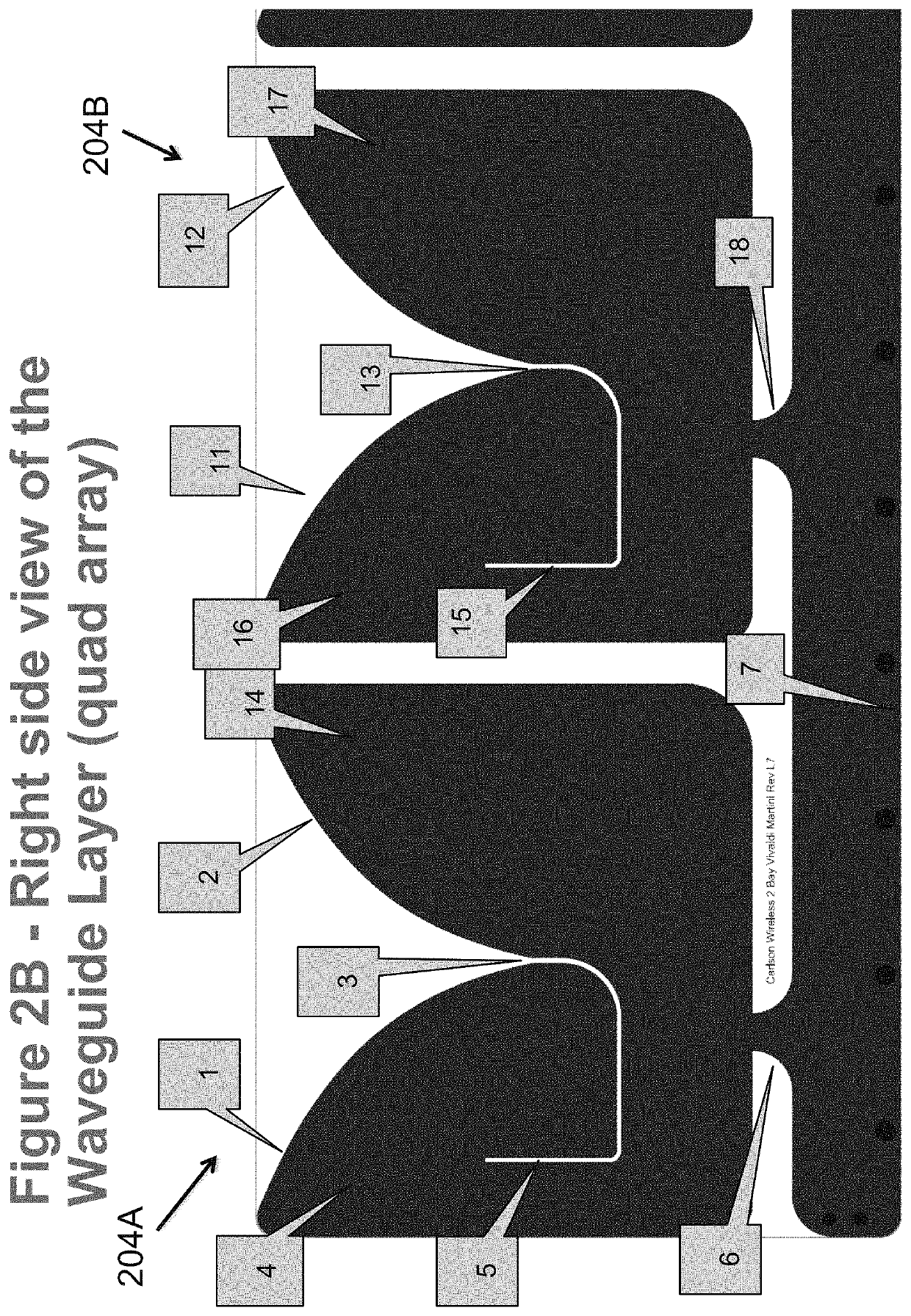Vivaldi notch waveguide antenna
a waveguide antenna and notch technology, applied in the direction of antennas, electrical equipment, antennas, etc., can solve the problems of physical implementation degraded performance and further challenge of conventional antenna performance, and achieve the effect of suppressing the higher frequency general end fire characteristics of the antenna, enhancing the end fire slot vswr component of the antenna bandwidth, and improving gain characteristics
- Summary
- Abstract
- Description
- Claims
- Application Information
AI Technical Summary
Benefits of technology
Problems solved by technology
Method used
Image
Examples
Embodiment Construction
[0037]FIG. 1 is a diagram showing a conventional Vivaldi antenna implementation 100 including a conducting waveguide layer 102 comprising two symmetrical conducting wings 104&106 and a signal microstrip 108 (shown in dotted lines) which is typically placed on the opposite side of a coupled printed circuit board 110. The printed circuit board 110 may comprise a sheet of RF4 high-pressure thermoset plastic laminate material.
[0038]Each of the conducting wings 104&106 has an inner edge 104E &106E which is cut away along an exponential curve. A flared notch 112 is thereby formed between the two conducting wings 104&106. Radio frequency waves are theorized to radiate from a corresponding point along an axis at which the width of the flared notch is equal to λ / 2.
[0039]FIG. 2A is a diagram of the waveguide layer for one embodiment of the present invention 200 (hereinafter, “the dual element array”200) incorporating dual Vivaldi horns 202A &202B formed into an array. The familiar exponential...
PUM
 Login to View More
Login to View More Abstract
Description
Claims
Application Information
 Login to View More
Login to View More - R&D
- Intellectual Property
- Life Sciences
- Materials
- Tech Scout
- Unparalleled Data Quality
- Higher Quality Content
- 60% Fewer Hallucinations
Browse by: Latest US Patents, China's latest patents, Technical Efficacy Thesaurus, Application Domain, Technology Topic, Popular Technical Reports.
© 2025 PatSnap. All rights reserved.Legal|Privacy policy|Modern Slavery Act Transparency Statement|Sitemap|About US| Contact US: help@patsnap.com



